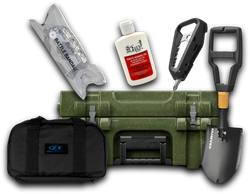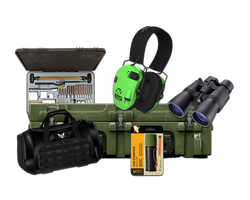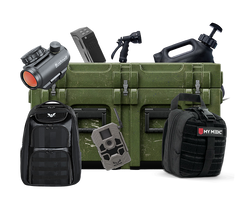How Do Sleeping Bags Work: The Science Behind Staying Warm
Table of Contents
- Introduction
- The Basics of Heat Retention
- Types of Insulation Materials
- Understanding Temperature Ratings
- Tips for Enhancing Warmth in a Sleeping Bag
- Common Misconceptions About Sleeping Bags
- Caring for Your Sleeping Bag
- Conclusion
- FAQ
Introduction
Imagine this: you’re camping under a blanket of stars, the chill of the night air settling in, and all you have between you and the cold is your sleeping bag. As the temperature drops, the effectiveness of your sleeping bag becomes crucial. Have you ever wondered how sleeping bags manage to keep you warm in such harsh conditions? The answer lies in the science of insulation and the materials used in their construction.
Understanding how sleeping bags work is essential for anyone who enjoys the outdoors, whether you’re a weekend camper or a hardcore survivalist. This post will delve into the mechanics of sleeping bags, exploring how they function to trap warmth, the different types of insulation available, and how to choose the right sleeping bag for your needs. By the end of this article, you will have a solid grasp of the principles behind sleeping bags, enabling you to make informed decisions when selecting gear for your next adventure.
The content of this article is structured to cover the following topics:
- The basic principles of heat retention in sleeping bags.
- Types of insulation materials and their effectiveness.
- Understanding temperature ratings and how they affect your choice.
- Tips for enhancing warmth when using a sleeping bag.
- Common misconceptions about sleeping bags.
- How to care for your sleeping bag to ensure longevity.
The Basics of Heat Retention
At the heart of a sleeping bag's ability to keep you warm is the principle of insulation. Insulation works by trapping air, which is a poor conductor of heat. When you slip into a sleeping bag, your body generates heat, which warms the air inside the bag. The insulation material then reduces the loss of this heat to the colder environment outside.
Conductive, Convective, and Radiative Heat Loss
Understanding how heat loss occurs is critical. The human body loses heat through three main processes:
-
Conduction: This is the direct transfer of heat from your body to the materials that touch it. A sleeping bag minimizes this by providing a barrier between your body and the cold ground.
-
Convection: This involves the movement of air. Air can carry heat away from your body, and sleeping bags are designed to limit airflow, thereby reducing convective heat loss.
-
Radiation: Your body radiates heat in the form of infrared energy. Sleeping bags help reflect this radiation back to you, keeping you warmer.
The Role of Air in Insulation
Air is an excellent insulator when it is trapped. Sleeping bags are designed to create a space that contains a significant amount of air. The insulation material, whether down or synthetic, serves the purpose of minimizing air movement within the bag, ensuring that the warm air generated by your body stays close.
Types of Insulation Materials
Selecting the right sleeping bag often comes down to the type of insulation used in its construction. There are two primary categories: down insulation and synthetic insulation.
Down Insulation
Down insulation is derived from the soft feathers of ducks or geese. It is known for its superior warmth-to-weight ratio, meaning it provides excellent insulation without adding much bulk. Here are some key points about down insulation:
- Warmth: Down is highly compressible, allowing it to trap a significant amount of air, which enhances its insulating properties.
- Lightweight: Down sleeping bags are typically lighter than their synthetic counterparts, making them ideal for backpacking.
- Durability: With proper care, down insulation can last for many years.
- Moisture Sensitivity: Down loses its insulation properties when wet, making it less effective in humid conditions unless treated with a water-resistant coating.
Synthetic Insulation
Synthetic insulation is made from polyester fibers and is designed to mimic down's insulating properties. Here are some advantages of synthetic insulation:
- Water Resistance: Synthetic materials retain their insulating properties even when wet, making them a better choice for damp environments.
- Affordability: Generally, synthetic sleeping bags are more budget-friendly than down bags.
- Ease of Care: Synthetic bags are often machine washable and dry quickly, making them easier to maintain.
Comparison: Down vs. Synthetic
When choosing between down and synthetic insulation, consider the following:
- Weight and Packability: Down is usually lighter and more compressible, making it a favorite among backpackers.
- Moisture Performance: Synthetic insulation performs better in wet conditions.
- Cost: Down sleeping bags tend to be more expensive due to the high-quality materials used.
Understanding Temperature Ratings
Temperature ratings are essential for determining the suitability of a sleeping bag for specific weather conditions. These ratings provide guidance on the lowest temperatures at which a sleeping bag is expected to keep an average sleeper warm.
Comfort Rating vs. Lower Limit Rating
- Comfort Rating: This is the temperature at which a sleeper can expect to feel comfortable and warm. It assumes the sleeper is wearing an appropriate base layer.
- Lower Limit Rating: This rating indicates the lowest temperature at which a sleeper can survive without hypothermia. It’s generally less comfortable, meaning you might feel cold at this temperature.
When selecting a sleeping bag, always consider the conditions you’ll be facing. It’s often recommended to choose a bag rated for temperatures lower than what you expect to encounter.
Tips for Enhancing Warmth in a Sleeping Bag
While the sleeping bag itself plays a crucial role in warmth retention, several factors can enhance its effectiveness:
Layering
Layering your clothing is an effective way to increase warmth. Wearing thermal base layers, hats, and socks inside your sleeping bag can help retain body heat.
Sleeping Pads
Using an insulated sleeping pad beneath your bag is essential. Most heat loss occurs through conduction with the cold ground. A good sleeping pad will provide an additional barrier against the cold.
Sealing the Bag
Ensure that your sleeping bag is properly zipped and cinched at the top to prevent drafts. Many sleeping bags come with draft collars and hoods, which help keep warm air from escaping.
Ventilation Considerations
While you want to trap heat, it's also crucial to prevent moisture buildup from sweat. Ventilating your bag slightly can help manage this while still retaining warmth.
Common Misconceptions About Sleeping Bags
Despite their popularity, there are several misconceptions about sleeping bags that can lead to poor choices or discomfort.
Misconception 1: All Sleeping Bags Are the Same
Not all sleeping bags are created equal. Differences in materials, construction, and insulation types can significantly affect the bag's performance in various conditions.
Misconception 2: You Can Use Any Bag in Any Weather
Using a sleeping bag outside its temperature rating can lead to discomfort and even hypothermia. Always match your sleeping bag to the expected weather conditions.
Misconception 3: Down Bags Are Always Better
While down bags have their advantages, they aren't always the best choice for every situation. Synthetic bags may be preferable in wet conditions or for budget-conscious campers.
Caring for Your Sleeping Bag
Proper care can prolong the life of your sleeping bag, ensuring it performs well for years to come.
Storage
Always store your sleeping bag loosely in a breathable storage sack or hung up to maintain its loft. Avoid keeping it compressed in its stuff sack for long periods, as this can damage the insulation.
Cleaning
Refer to the manufacturer's instructions for cleaning. Most sleeping bags can be washed in a front-loading washing machine on a gentle cycle. Use a mild detergent and avoid fabric softeners.
Drying
Ensure your sleeping bag is completely dry before storage. You can tumble dry it on low heat with dryer balls to help fluff the down or synthetic insulation.
Conclusion
Understanding how sleeping bags work is crucial for anyone venturing into the great outdoors. The science behind their insulation, the various types of materials, and the importance of temperature ratings can significantly enhance your camping experience. By selecting the right sleeping bag and taking care of it properly, you can ensure warmth and comfort during your adventures.
As you prepare for your next outdoor excursion, consider exploring the curated collections offered by Crate Club, where you can find a selection of high-quality tactical gear, including sleeping bags suitable for various conditions. Join the Crate Club community today to enhance your preparedness with the best gear available!
Explore Crate Club's subscription services to receive expert-selected tactical gear delivered to your door each month: Crate Club Subscription Services. Or visit the Crate Club Shop to find the perfect sleeping bag and other essential gear for your next adventure.
FAQ
Q1: How do I choose the right sleeping bag for my needs?
A1: Consider the expected temperatures, insulation type, and your personal comfort preferences. Look for a sleeping bag rated for lower temperatures than anticipated to ensure warmth.
Q2: Can I use a sleeping bag liner to increase warmth?
A2: Yes, sleeping bag liners can add additional warmth and insulation without adding significant bulk.
Q3: Is down insulation better than synthetic?
A3: It depends on your needs. Down insulation offers better warmth-to-weight ratio but is less effective when wet. Synthetic insulation performs better in damp conditions.
Q4: How do I prevent my sleeping bag from getting damp?
A4: Store your sleeping bag in a dry place, and consider using a waterproof stuff sack if you're camping in wet conditions. Avoid using it if it’s already damp.
Q5: What should I do if I feel cold in my sleeping bag?
A5: Check for drafts, ensure you’re properly layered, and consider adding an insulated sleeping pad underneath for additional warmth.
Share this article



